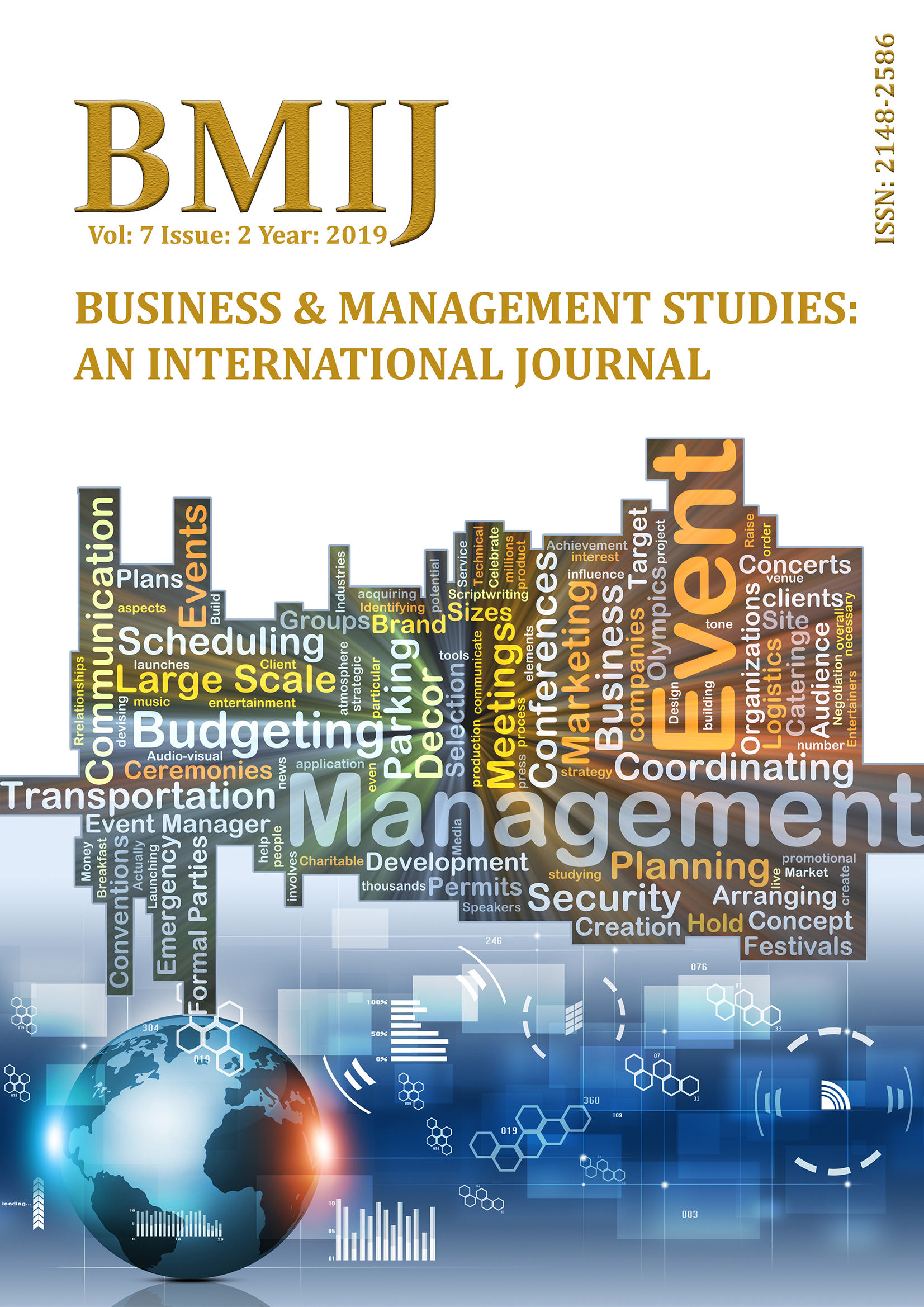HİSSE SENEDİ PİYASALARININ EMİSYON TİCARETİYLE İLGİLİ DÜZENLEMELERE TEPKİSİ: AVRUPA HAVAYOLU ENDÜSTRİSİNDEN BİR KANIT

Yayınlanmış 2019-06-26
Anahtar Kelimeler
- European Union emission trading scheme, Stock market reactions, Event-study methodology, Airline industry.
- Avrupa Birliği emisyon ticareti sistemi, Hisse senedi piyasası tepkisi, Olay analizi metodolojisi, Havayolu sektörü.
Nasıl Atıf Yapılır
Özet
Uluslararası havacılığın 2012 yılından itibaren Avrupa Birliği (AB) Emisyon Ticareti Sistemine dâhil edilmesinin, başlangıç veya varış noktası bir AB havaalanı olan uçuşlara ilave bir maliyet getirmesi beklenmektedir. Bu da havayollarına yeni maliyetler getirecektir. Bu makalenin amacı, finansal piyasaların bu düzenleyici değişikliğe yönelik duyurulara nasıl tepki verdiğini analiz etmektir. Olay analizi metodolojisi uygulanarak ve 20 adet Avrupalı havayolu şirketine ait hisse senetleri kullanılarak elde edilen sonuçlar, hisse senedi piyasalarının havayolu şirketlerini değerlendirirken bu düzenlemeleri dikkate almama eğiliminde olduklarını göstermektedir. Çalışmanın diğer bir sonucuna göre, düşük maliyetli havayollarına ait hisse senetlerindeki tepkinin derecesi, tam hizmet sunan havayolu hisselerindeki tepkiden farklı değildir.
İndirmeler
Referanslar
- Albers, S., Buhne, J.A., & Peters, H. (2009). Will the EU-ETS instigate airline network reconfigurations? Journal of Air Transport Management, 15(1), 1-6.
- Anger, A., & Kohler, J. (2010). Including aviation emissions in the EU ETS: Much ado about nothing? Transport Policy, 17, 38–46.
- Bosch, J.C., Eckard, E.W., & Singal, V. (1998). The Competitive Impact of Air Crashes: Stock Market Evidence. Journal of Law and Economics, 41, 503-519.
- Carter, D.A., & Simkins, B.J. (2004). The market’s reaction to unexpected, catastrophic events: the case of airline stock returns and the September 11th attacks. The Quarterly Review of Economics and Finance, 44, 539–558.
- Commission of the European Communities. (2005). Reducing the Climate Change Impact of Aviation, COM (2005) 459 final, Brussels.
- Commission of the European Communities. (2006). Proposal for a Directive of the European Parliament and of the Council amending Directive 2003/87/EC so as to include aviation activities in the scheme for greenhouse gas emission allowance trading within the Community, COM (2006) 818 final, Brussels.
- Drakos, K. (2004). Terrorism-induced structural shifts in financial risk: airline stocks in the aftermath of the September 11th terror attacks. European Journal of Political Economy, 20, 435–446.
- Fama, E.F. (1976). Foundations of Finance, New York, Basic Books.
- Fama, E.F., Fisher, L., Jensen, M.C., & Roll, R. (1969). The adjustment of stock prices to new information. International Economic Review, 10, 1-21.
- Flouris, T., & Swidler, S. (2004). American airlines’ takeover of TWA: an ex-post analysis of financial market information. Journal of Air Transport Management, 10, 173–180.
- Friesen, M. (2005). Capital Market’s Assessment of European Airline Mergers and Acquisitions–The Case of Air France and KLM. 5th Swiss Transport Research Conference.
- Givoni, M., & Rietveld, P. (2010). The environmental implications of airlines' choice of aircraft size. Journal of Air Transport Management, 16(3), 159-167.
- Ibitz, A. (2015). Towards a global scheme for carbon emissions reduction in aviation: China’s role in blocking the extension of the European Union’s Emissions Trading Scheme. Asia Europe Journal, 13(2), 113-130.
- Knapp, W. (1990). Event Analysis of Air Carrier Mergers and Acquisitions. The Review of Economics and Statistics, 72, 703-707.
- Lu, C. (2009). The implications of environmental costs on air passenger demand for different airline business models. Journal of Air Transport Management, 15, 158-165.
- Macintosh, A., & Wallace, L. (2009). International aviation emissions to 2025: Can emissions be stabilised without restricting demand? Energy Policy, 37, 264-273.
- Mayor, K., & Tol, R.S.J. (2010). The impact of European climate change regulations on international tourist markets. Transportation Research Part D, 15, 26-36.
- Morrel, P. (2007). An evaluation of possible EU air transport emissions trading scheme allocation methods. Energy Policy, 35, 5562-5570.
- Morrel, P. (2009). The potential for European aviation CO2 emissions reduction through the use of larger jet aircraft. Journal of Air Transport Management, 15, 151-157.
- Scheelhaase, J. D., & Grimme, W. G. (2007). Emissions trading for international aviation—an estimation of the economic impact on selected European airlines. Journal of Air Transport Management, 13(5), 253-263.
- Scheelhaase, J., Grimme, W., & Schaefer, M. (2010). The inclusion of aviation into the EU emission trading scheme–Impacts on competition between European and non-European network airlines. Transportation Research Part D: Transport and Environment, 15(1), 14-25.
- Scheelhaase, J., Schaefer, M., Grimme, W., & Maertens, S. (2012). Cost impacts of the inclusion of air transport into the European emissions trading scheme in the time period 2012-2020. European Journal of Transport and Infrastructure Research, 12(4), 332-348.
- Singal, V. (1996). Airline Mergers and Competition: An Integration of Stock and Product Price Effects. The Journal of Business, 69, 233-268.
- Zhang, A., & Aldridge, D. (1997). Effects of Merger and Foreign Alliance: An Event Study of the Canadian Airline Industry. Transportation Research Part E: Logistics and Transportation Review, 33, 29-42.


